Baroque Genius of Gian Lorenzo Bernini: Four Timeless Sculptures
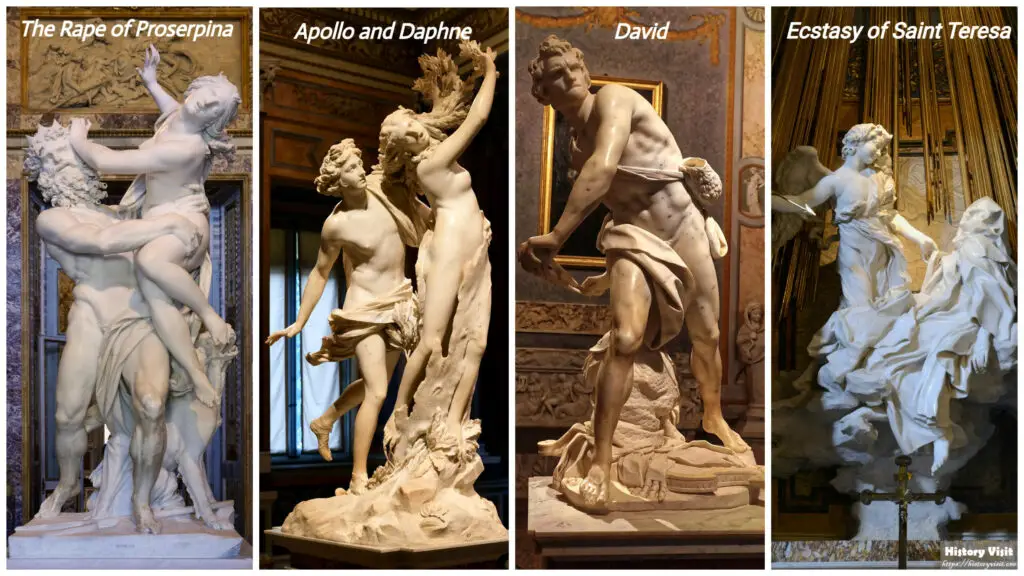
Introduction
The Baroque era changed the face of European art. It brought energy, drama, and emotion. At its heart stood Gian Lorenzo Bernini. He was more than a sculptor he was a master of movement and feeling.
Baroque art aimed to stir the soul. It mixed beauty with motion and passion. Bernini captured all that in stone. His works felt alive, filled with tension and grace.
This article explores four of his greatest Baroque sculptures. Each was created in a different moment of his early genius. From myth to religion, these pieces show Bernini’s unmatched power in marble.
The Rape of Proserpina (1621–1622): Early Brilliance in Baroque Drama
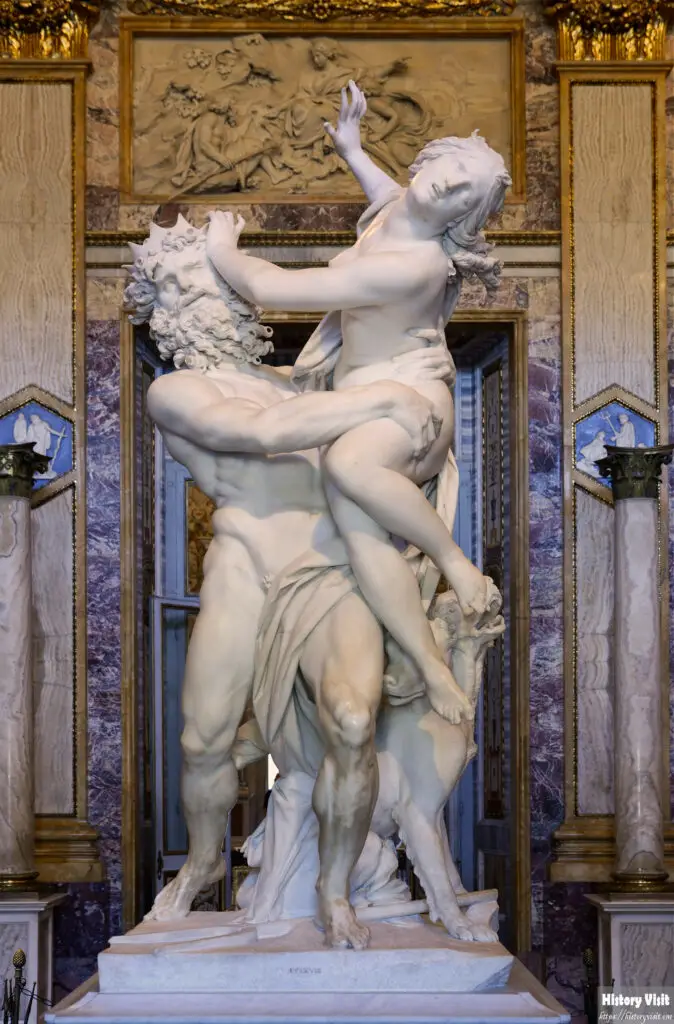
At just 23, Bernini sculpted The Rape of Proserpina. It was a commission for Cardinal Scipione Borghese. It shows Pluto abducting Proserpina. The sculpture tells the myth with stunning realism.
The figures twist with struggle and power. Proserpina pushes Pluto away. His hands press into her thigh. The marble seems to bend like flesh. Her flowing hair and falling tears freeze a moment of terror.
Bernini used contrast in textures. Smooth skin clashes with Pluto’s rough beard. The flowing cloth dances around the figures. Every detail enhances the emotion.
This Baroque piece set a new standard. It brought viewers into the scene. They could feel the motion and emotion. It remains one of the boldest works of youth in sculpture history.
Apollo and Daphne (1622–1625): The Pinnacle of Baroque Motion
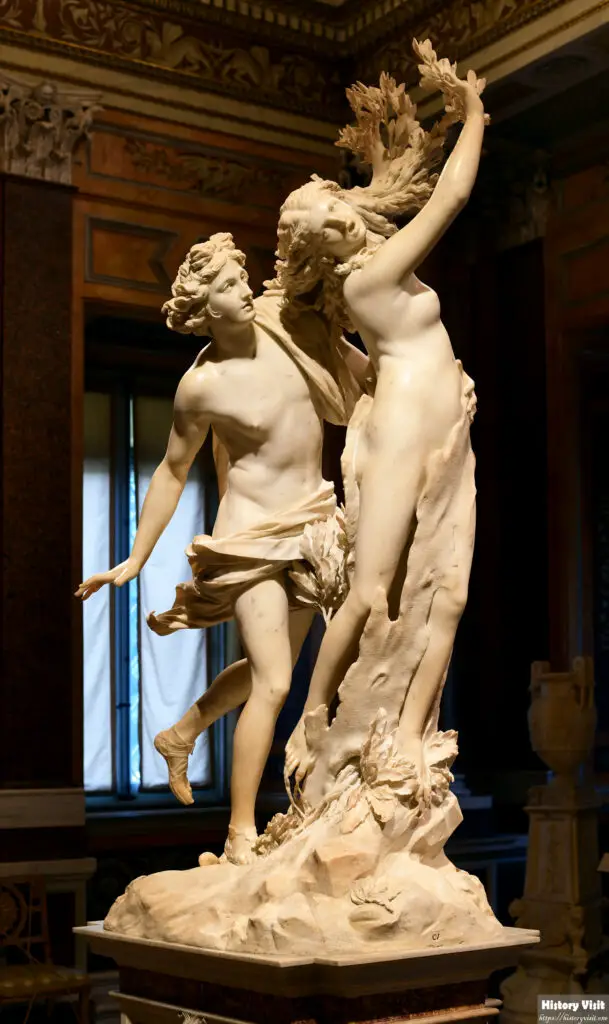
Shortly after Proserpina, Bernini began Apollo and Daphne. Again, it was for Cardinal Borghese. The subject comes from Ovid’s Metamorphoses. It captures the instant Daphne turns into a tree.
Apollo stretches forward in pursuit. Daphne, in mid-transformation, grows leaves and bark. Her fingers branch out. Her toes root to the ground. Fear and shock cover her face.
The sculpture is full of movement. It is Baroque in every way. The flowing hair, twisting bodies, and windblown drapery all show tension. It is art frozen at its most dramatic point.
Bernini followed the viewer’s eye. He guided them around the work. No single view tells the whole story. That technique was central to Baroque sculpture. It invited viewers to move and feel.
David (1623–1624): Baroque Power in Action
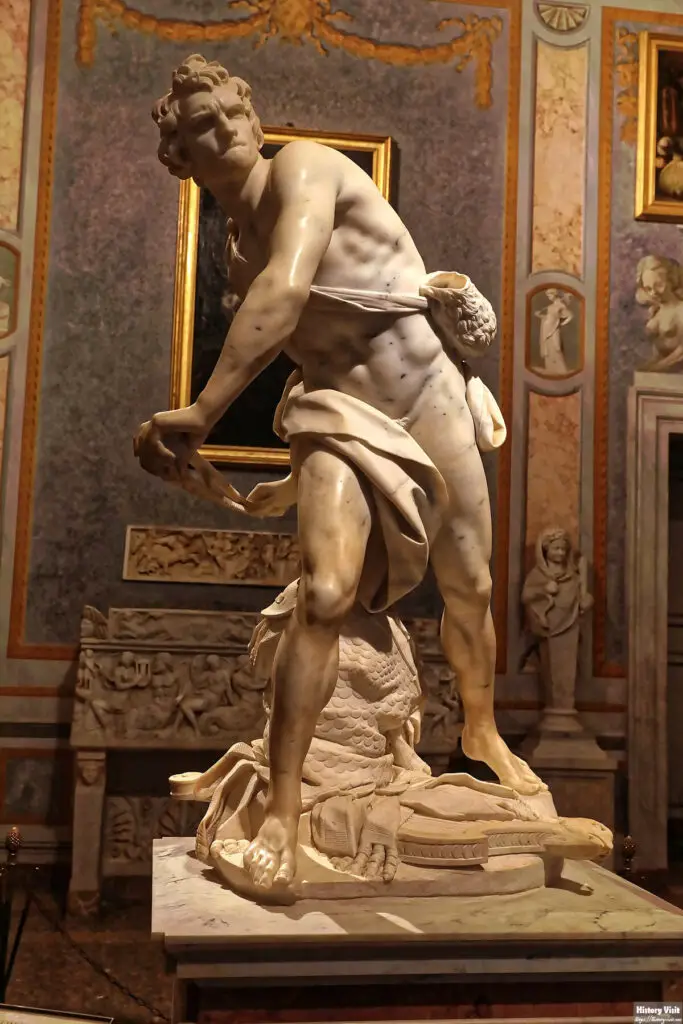
Around the same time, Bernini made David. This sculpture marked a bold shift from earlier Davids. It was not still or proud. It was fierce and caught mid-action.
David prepares to throw his stone. His muscles are tight. His eyes focus on Goliath. His body twists with tension. You feel the weight of that single moment.
Unlike Michelangelo’s calm David, Bernini’s is kinetic. This David sweats and fights. He is real and ready. The sling pulls across his body with silent force.
Baroque art is about emotion and motion. David shows both. Bernini even used his own face as a model. He posed in a mirror to study expression. The result is personal and powerful.
The Ecstasy of Saint Teresa (1647–1652): Baroque Spiritual Theater
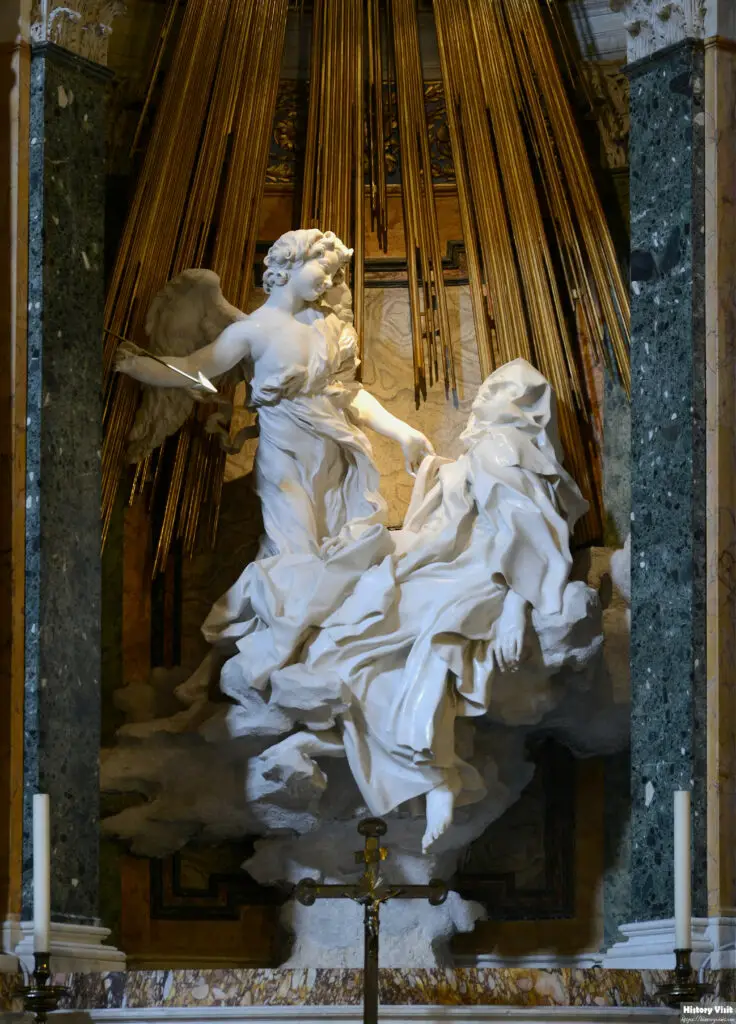
Years later, Bernini turned to sacred drama. The Ecstasy of Saint Teresa is his spiritual masterpiece. It was created for the Cornaro Chapel in Rome.
The sculpture shows Saint Teresa in divine rapture. An angel holds a spear over her heart. Her head falls back. Her mouth opens. Her robes ripple like waves. Light streams down from above.
This is Baroque theater in stone. Bernini designed the full setting. Marble columns, colored marble, and real gold surround the figures. The whole chapel becomes part of the art.
Saint Teresa’s words inspired the piece. She described her vision in detail. Bernini sculpted not just what she saw but what she felt.
Baroque Sculpture: Defining a New Era
Bernini did not just follow Baroque ideals he created them. His art defined the era. He combined classical skill with deep emotion.
The Baroque style used light, shadow, and movement. It told stories with energy and feeling. Bernini sculpted that vision better than anyone.
He made marble feel alive. He showed skin, breath, and thought. His work changed how people viewed sculpture.
Themes Across Bernini’s Baroque Works
These four sculptures share themes. Passion, tension, and transformation appear in each. They reveal something about the soul.
In Proserpina, we see fear and force. In Daphne, change and escape. In David, courage and fury. In Saint Teresa, joy and surrender.
Baroque art embraced extremes. Bernini used myth and faith to explore them. His figures twist, reach, and rise.
He showed emotion in every pose. Nothing stayed still. Every piece moved.
Bernini’s Techniques and Genius
Bernini studied human form deeply. He used live models. He sketched often. He watched theater and dance.
He also mastered marble. He knew how to shape folds, curls, and muscles. He used tools gently but with purpose.
Each chisel cut was planned. He worked with assistants but kept control. His hand guided every vision.
Bernini turned technical skill into story. He made viewers feel part of the sculpture.
Reception and Legacy
Bernini was praised in his time. Popes and princes admired him. His fame spread across Europe.
People came to Rome to see his works. They left changed. His art moved hearts and minds.
Today, his Baroque masterpieces are studied and celebrated. Students learn from them. Tourists still stand in awe.
Why These Four Stand Out

These four sculptures show Bernini’s range. Myth, heroism, and faith all appear. Each work marks a milestone.
Proserpina shows youthful fire. Apollo and Daphne shows technical brilliance. David shows force and realism. Saint Teresa shows mature vision.
Each piece is part of Baroque’s rise. Each helped define Bernini’s legacy.
Conclusion
Gian Lorenzo Bernini shaped the Baroque world. His sculptures still move people today. They combine technique with deep feeling.
From mythic chases to sacred visions, he captured emotion in stone. His work never rests. It flows, breathes, and speaks.
These four masterpieces remind us of his genius. They show what Baroque art can do. They prove that marble, in the right hands, lives forever.


